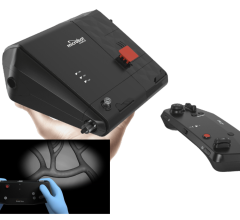Feature | August 28, 2014
Directional Atherectomy Effective as Frontline Therapy for PAD
August 28, 2014 — Directional atherectomy is safe and effective as a frontline therapy for the treatment of peripheral arterial disease (PAD), according to a landmark Covidien study published online in the Journal of American College of Cardiology, Cardiovascular Interventions (JACC CI).
Results from the DEFINITIVE LE study using Covidien’s TurboHawk and/or SilverHawk directional atherectomy systems demonstrated 95 percent limb salvage in patients with critical limb ischemia (CLI) and 78 percent overall patency (the ability for the treated artery to remain open) in claudicant patients at 12 months. The DEFINITIVE LE study is the largest atherectomy study conducted to date with independent, core lab analysis of the clinical outcomes.
“The DEFINITIVE LE study provides confirmatory evidence based on 12-month, independent core lab adjudicated data on the use of directional atherectomy in treating a diverse, real-world group of patients with PAD," said James F. McKinsey, M.D. FACS, co-global principal investigator and lead author of the study. “The study enrolled 800 patients, making it the largest trial with independent, core lab analysis for atherectomy to date. Results of the study demonstrate high limb salvage, patency rates, and diabetic outcomes. This further confirms the effectiveness and versatility of directional atherectomy in a wide range of vessel sizes and clinical presentations. Atherectomy is an important treatment option as the therapy leaves nothing behind in the body and preserves all future treatment options.”
More than 10 million people in the United States are affected by PAD, one of the most common vascular diseases occurring when arteries in the legs become narrowed or blocked by plaque. These blockages can result in severe pain for patients, limited physical mobility and non-healing leg ulcers. Additionally, PAD can have serious health consequences,including amputation and death. In fact, more than one million people in the U.S. are living with a limb loss as a result of diabetes and PAD and nearly half of the individuals who have an amputation due to vascular disease will die within five years.
The prospective, multi-center DEFINITIVE LE study enrolled 800 patients in 47 centers in United States and Europe and included two patient cohorts: those with claudication and those with CLI. Patients enrolled in the study were treated with the TurboHawk and/or SilverHawk, a catheter-based, minimally invasive treatment to remove plaque and restore blood flow, without leaving anything behind in patients with PAD. For the first time in an atherectomy study, DEFINITIVE LE also included pre-specified sub-group analysis comparing patency rates in diabetic and non-diabetic patients.
“The outcomes for patients with claudication reveal that in the scientific landscape directional atherectomy is not only safe but effective to a similar degree as previous trials in the superficial femoral artery (SFA). Diabetic patients, who remain challenging for therapy due to their advanced and multi-level disease, have similar patency rates to non-diabetic patients with claudication when performing directional atherectomy,” said Lawrence Garcia, M.D., co-global principal investigator of the study and chief of interventional cardiology and vascular interventions at St. Elizabeth’s Medical Center in Boston. “These findings provide strong clinical support for the versatility of directional atherectomy in treating patients with diabetes, claudication and critical limb ischemia.”
Among patients with claudication, primary patency was 78 percent at 12 months. Notably, this rate did not differ between patients with diabetes (77 percent) and those without diabetes (78 percent) — the first such results to be shown in a prospective, powered analysis. Specifically for the SFA, the patency rates were 83 percent in lesions under 10 cms in the claudicant cohort.
DEFINITIVE LE is the largest study of a series of three studies, which includes DEFINITIVE Ca++ and DEFINITIVE AR. The DEFINITIVE series enrolled 1,054 patients in the United States and Europe to evaluate the effectiveness of directional atherectomy.
For more information: www.covidien.com


 January 14, 2025
January 14, 2025 







